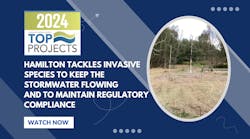Fun With Numbers
Is controlling erosion
–preventing accelerated soil loss–worth the cost?
That’s not a rhetorical question. Because our industry is built on the presumption the answer is affirmative, this should be a no-brainer; objectively, however, it has not been easy to answer.
Do we get an acceptable return when we spend money on erosion control? Do the benefits of proactive erosion and sediment control outweigh the expenses involved?
The IECA Economic Research Committee (ERC) has been grappling with these basic questions for years. Besides the implications to our entire industry, the answers hold major ramifications for public policy makers, planners, builders, designers, and communities the world over.
While exploring this question, the ERC has accumulated reams of relevant data from various government, academic, industry, and agricultural groups. Significant research has been done on the subject, yet a simple answer–or an agreed-upon way to find one–remains largely inaccessible to public policy makers–those with the greatest need for an answer to the question.
I suspect that what is needed here is a statistically valid, standardized methodology–a formula–that can be used to define the cost/benefit ratio of proactive erosion prevention and sediment control. The formula should use local values because every project has its own unique challenges–the costs incurred and the benefits derived in Anaheim, CA, for example, will differ from those in Amal, Sweden–and using local values will enable a much more accurate determination. Some values will change from one area to the next based on local costs for labor, property, material, and other factors; others will be constant.
With good reason, I’ve never been mistaken for a mathematician or statistician, but throwing caution to the wind, here’s my admittedly rough suggestion.
First, we need to determine the current cost of erosion and sedimentation (COES):
COES = (WT) + (DR) + (RC) + (RI) + (HL) + ( FL) + (REC)
Area
where:
- WT= estimated increased cost of water treatment/purification due to sediment loads above naturally occurring baseline levels
- DR= estimated increased cost of any dredging activities due to sediment loads above naturally occurring baseline levels
- RC= estimated increased costs associated with road closures and/or traffic delays due to erosion or sediment loads above naturally occurring baseline levels
- RI= estimated costs associated with an human respiratory illness that resulted from accelerated erosion-related airborne sediment
- HL= estimated financial loss caused by habitat loss due to sediment loads above naturally occuring baseline levels
- FL= estimated financial loss caused by loss of recreational and/or commercial fisheries due to sediment loads above naturally occuring baseline levels
- REC= estimated financial loss caused by loss of recreational use due to sediment loads above naturally occurring baseline levels
Once the CUES has been established, the cost of preventing erosion and sedimentation in the first place (COPES) needs to be established. Same sort of thinking here:
COPES = (M) + (L) + (MA) + (PP)
Area
- M= cost of materials
- L- cost of labor
- MA- cost of maintenance
- PP= costs associated with planning and permitting
Perhaps you or a colleague can help us out here: What other factors should be included, and what doesn’t belong? Is there a different approach that makes more sense? Please let us hear from you



